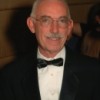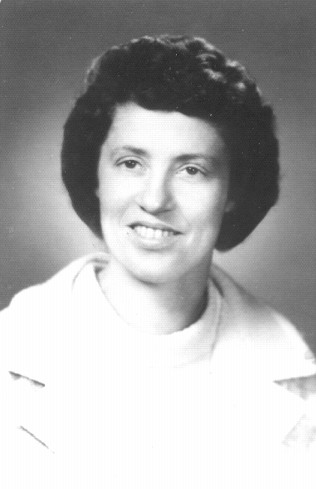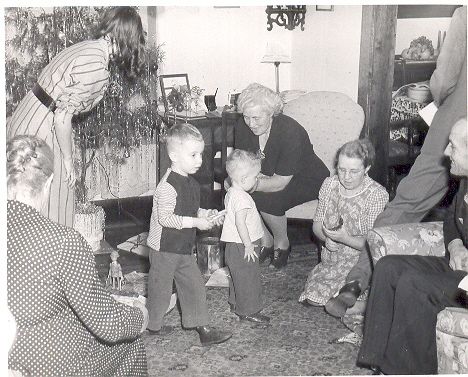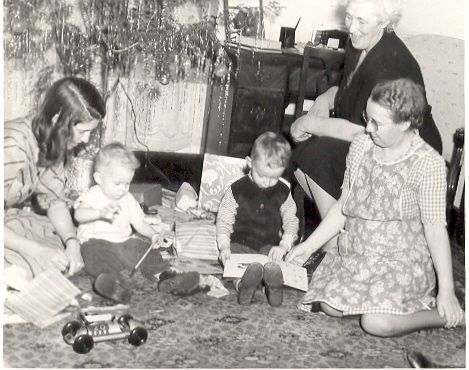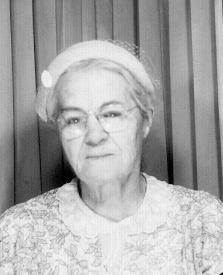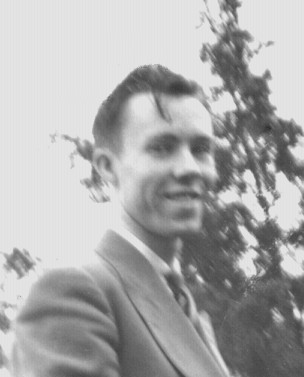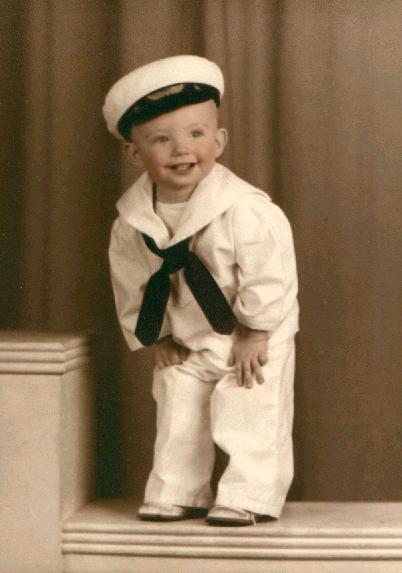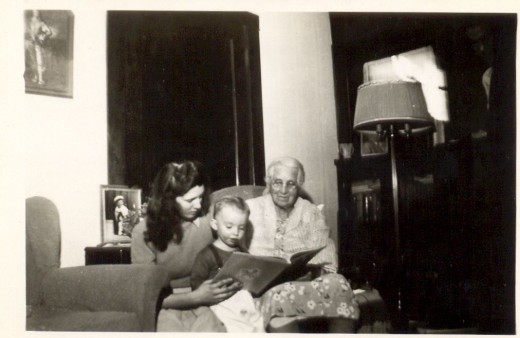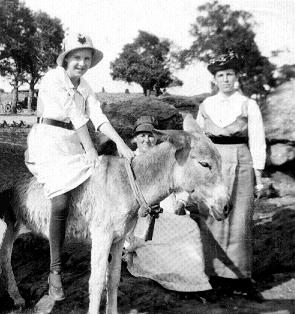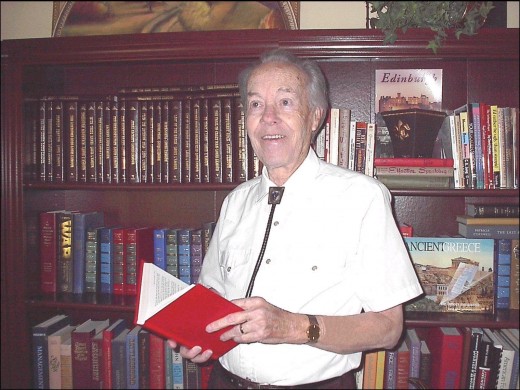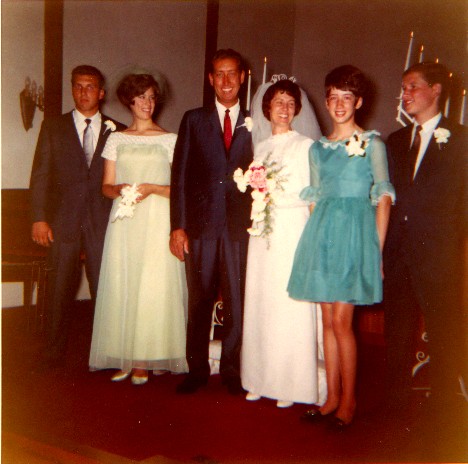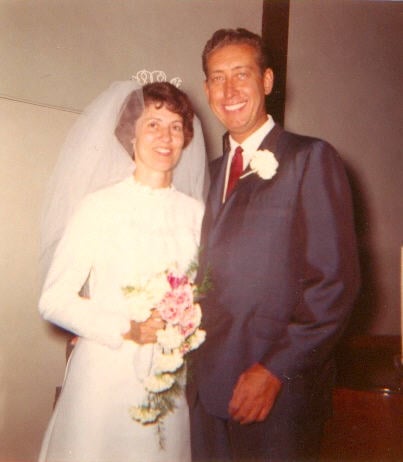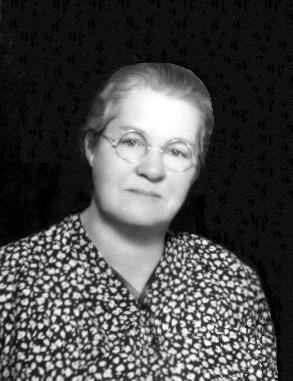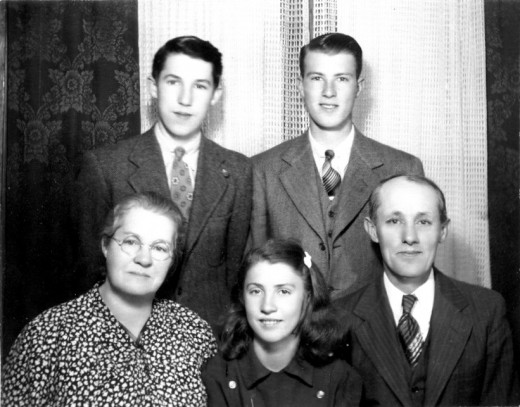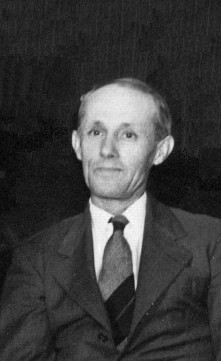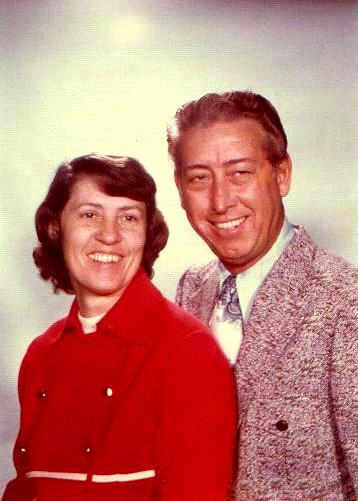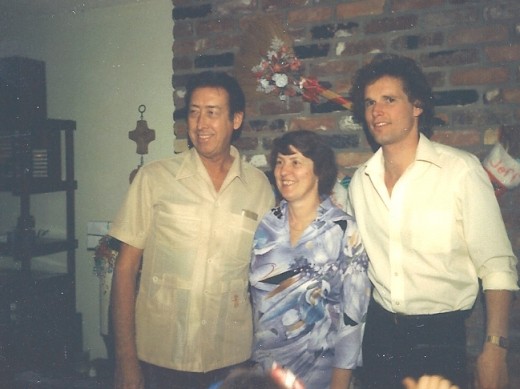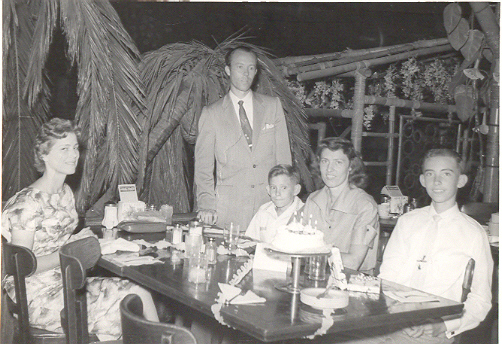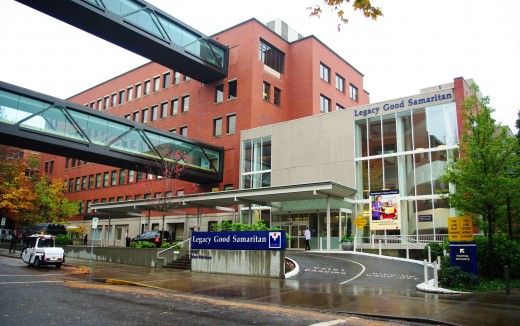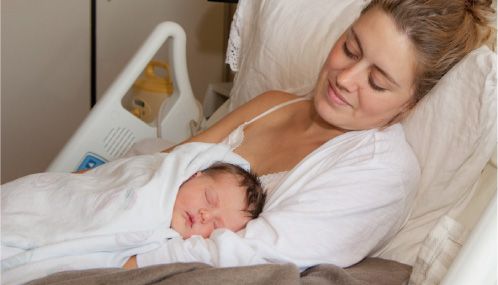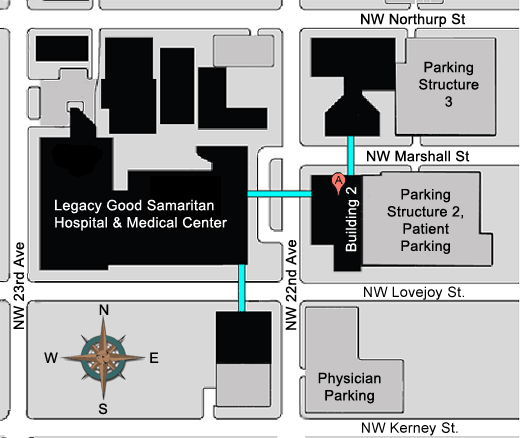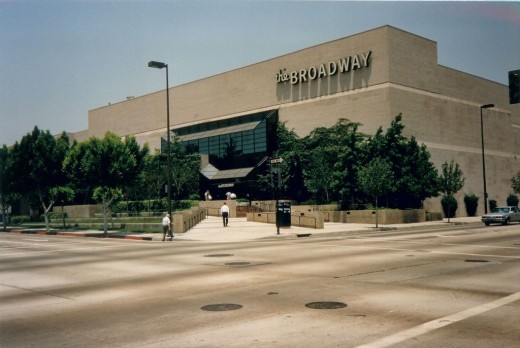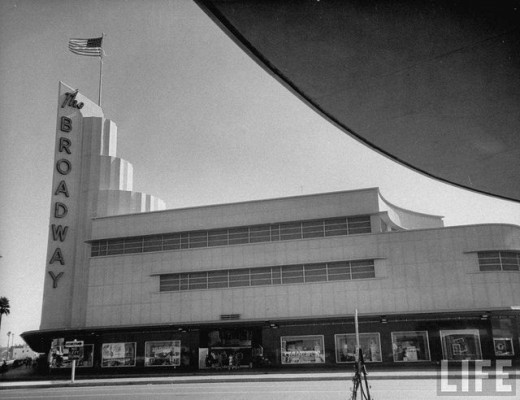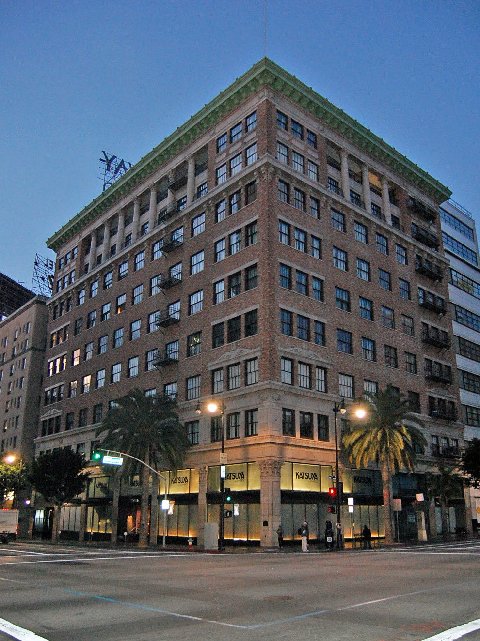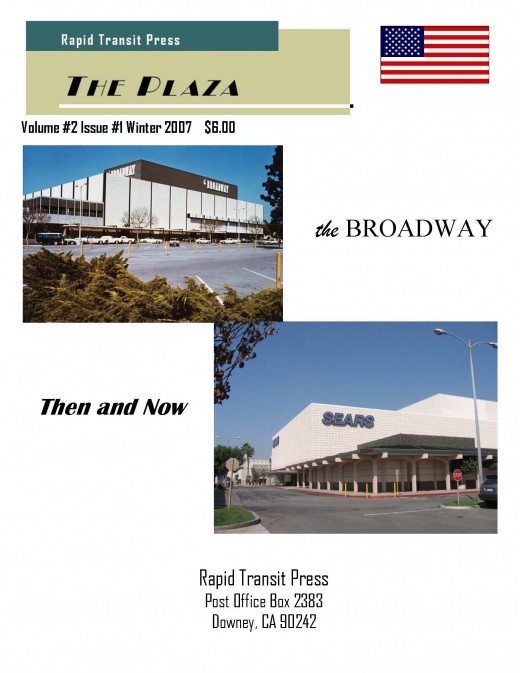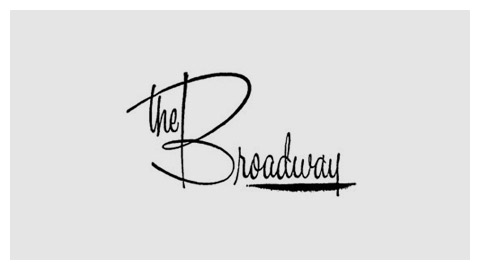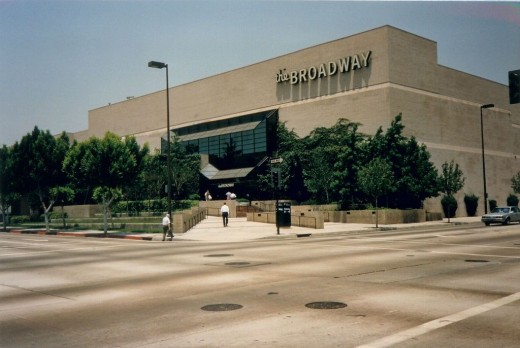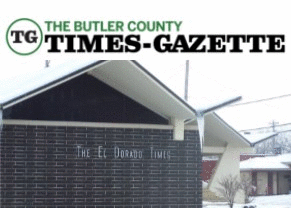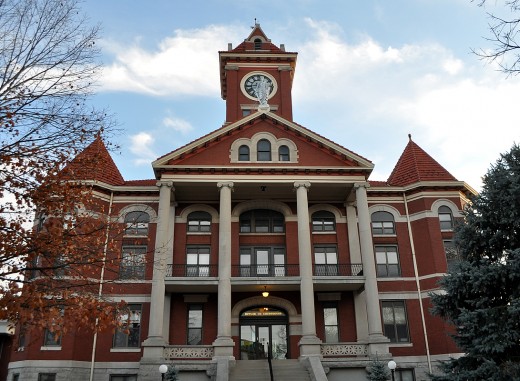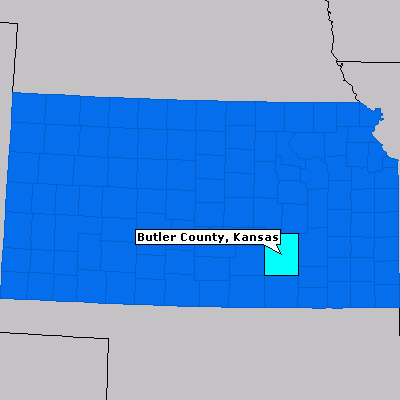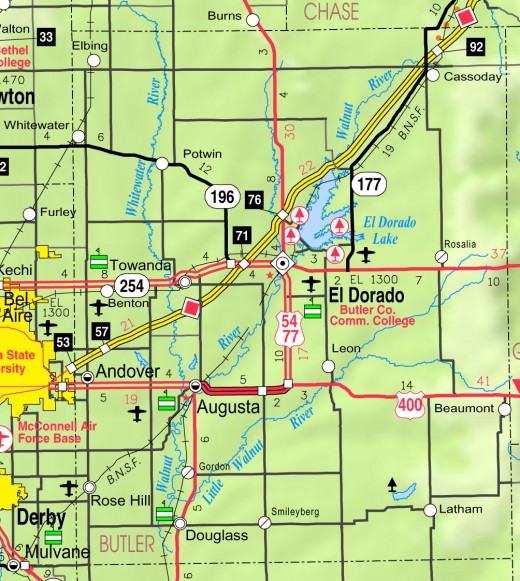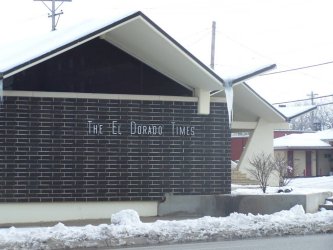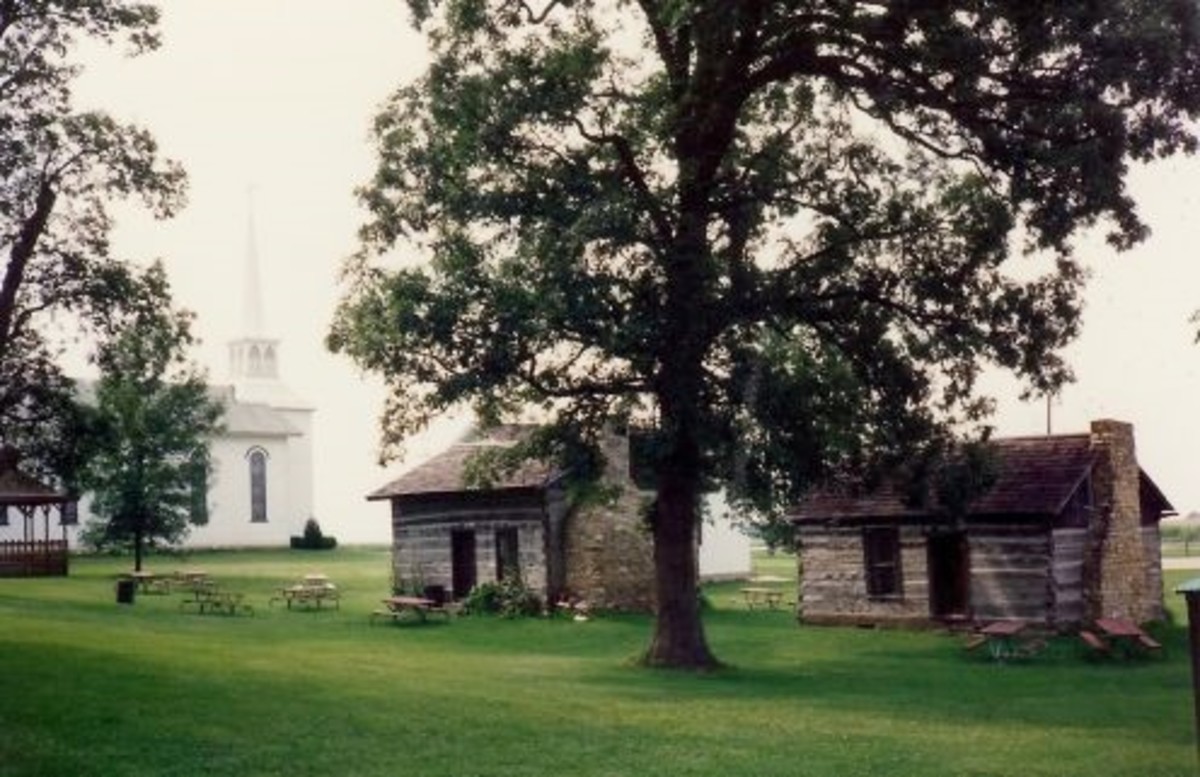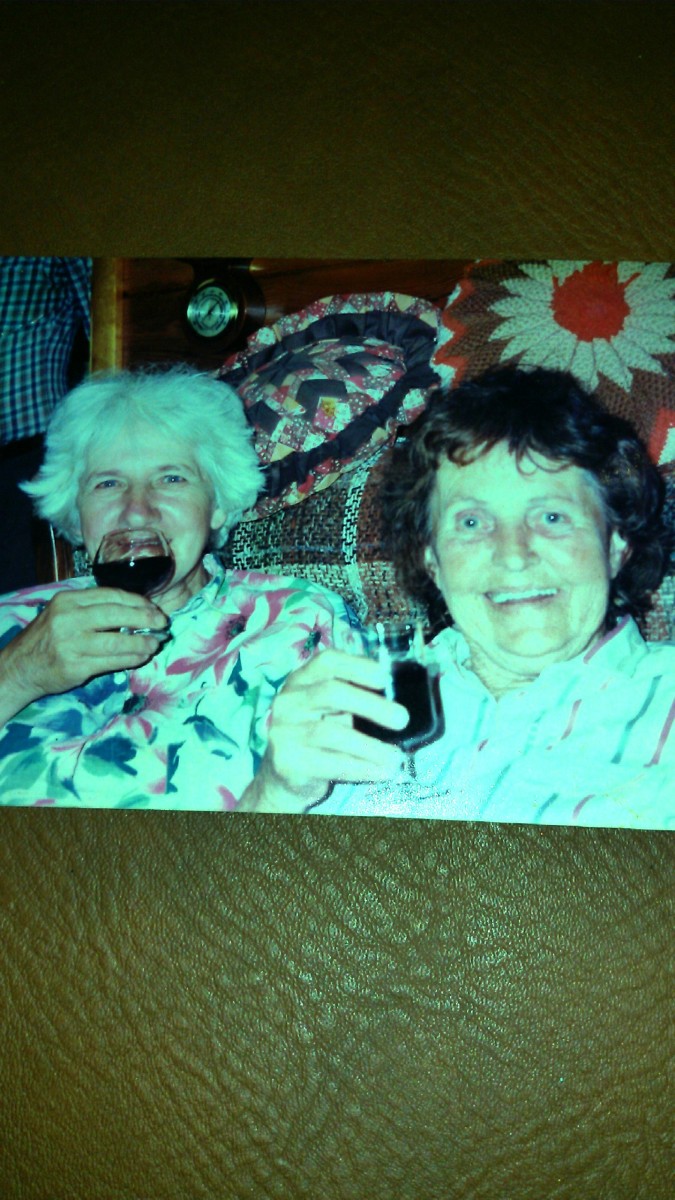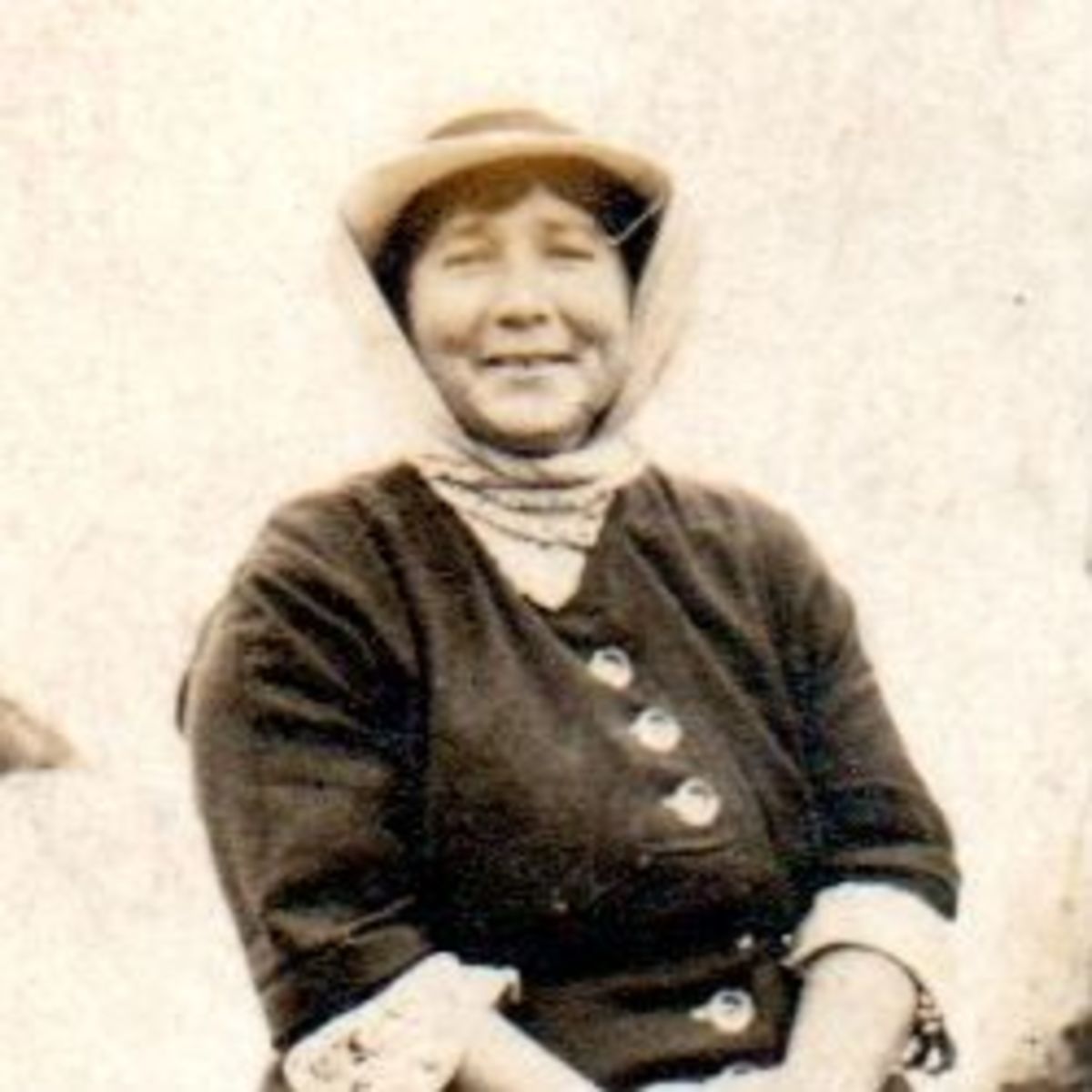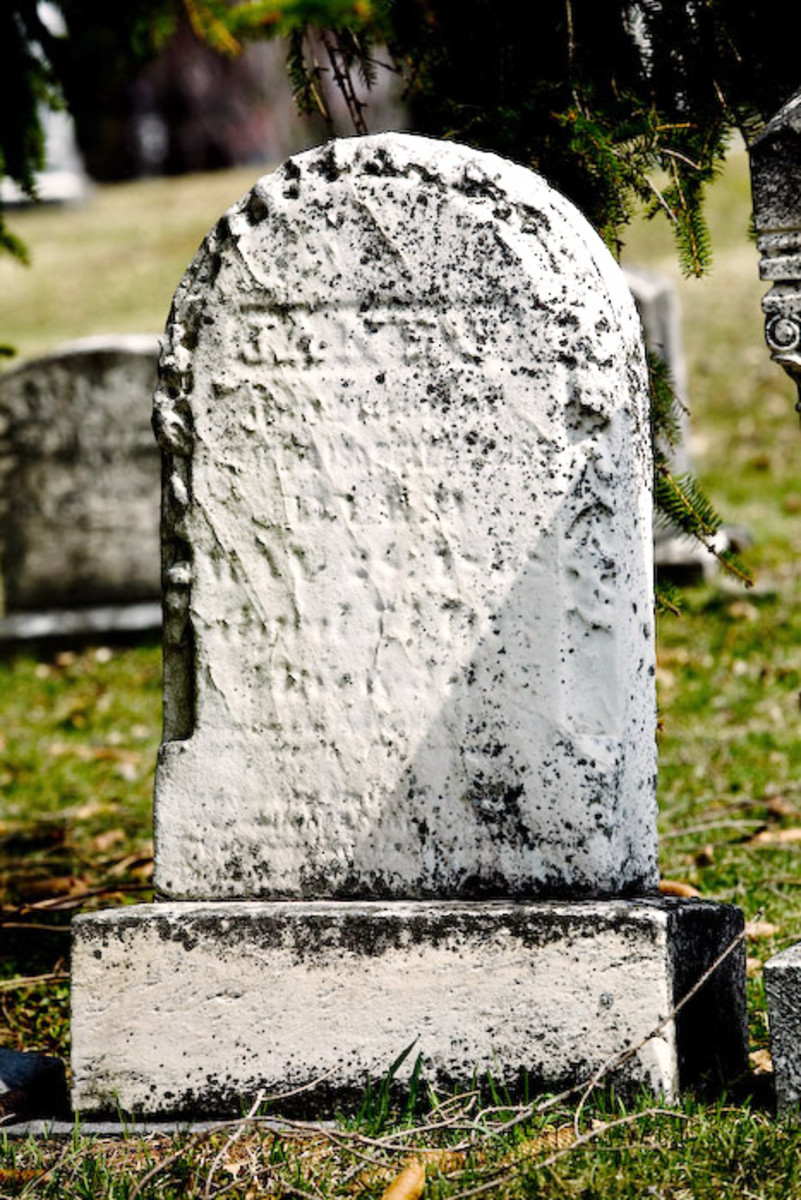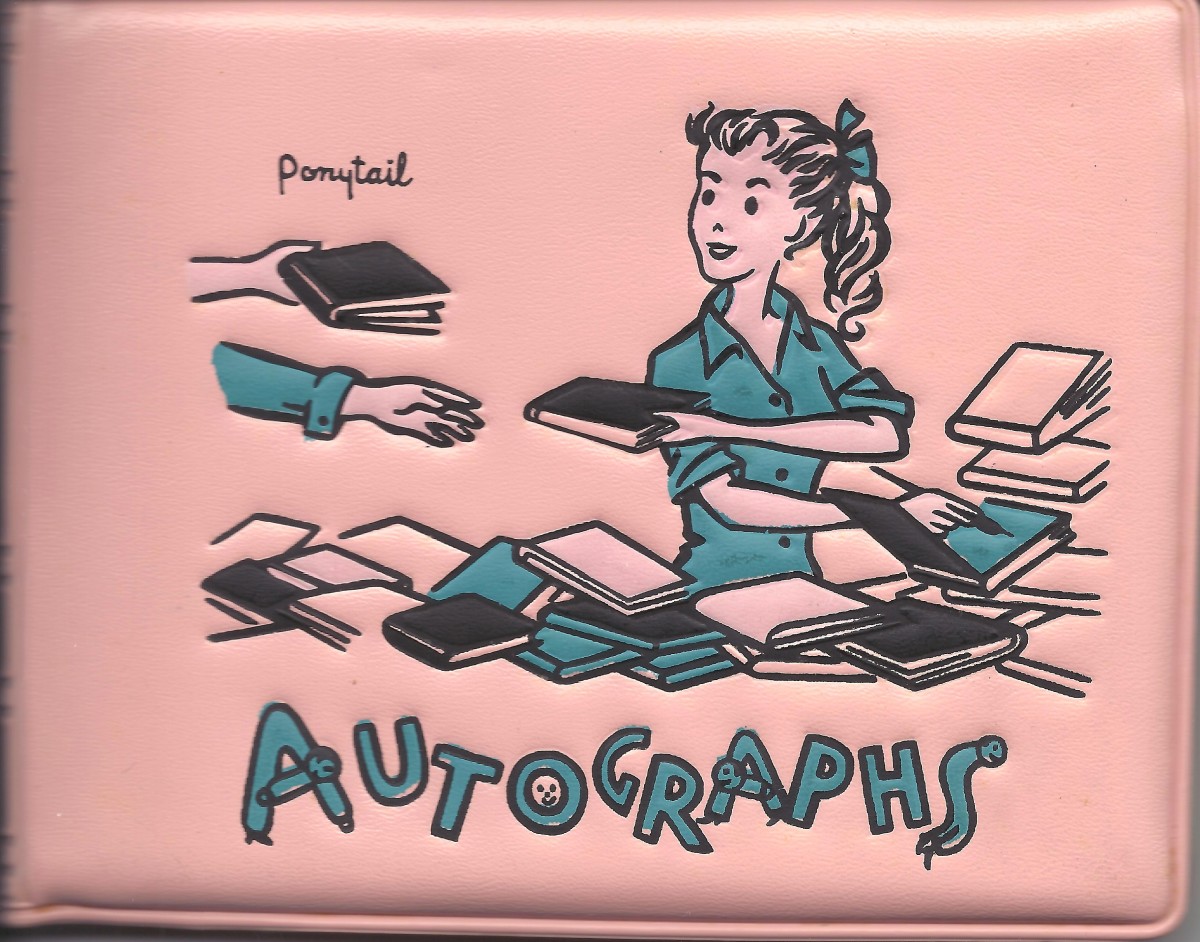Maybell Marie (Smith) Clift
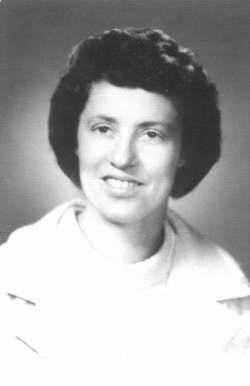
Life Tribute for Aunt Marie
Maybell Marie (Smith) Clift
December 7, 1928 - January 27, 2011
Maybell Marie (Smith) Clift, age 82, passed away on January 27, 2011 after living comfortably for several months in a rest home in Montrose California. Aunt Marie (as we all fondly remember her) had been a faithful and loving wife to Norvie for over 25 years.
Marie was born to the late Daisy and Rev. Harry W Smith in El Dorado, Kansas, December 7, 1928. Marie had three brothers, H. Mendell Smith, Merle T. Smith and William Ray Smith.
She graduated from Bethany Peniel College (now Southern Nazarene University) at Bethany, Oklahoma, and the Samaritan Hospital School of Nursing at Nampa, Idaho, and received a master's degree from the University of Oregon, School of Nursing at Portland, Oregon.
She taught nursing for four years at the Good Samaritan School of Nursing in Portland, Oregon, a year at the Goshen School of Nursing, Goshen, Indiana, a year at Olivet Nazarene University, Kankakee, Illinois and two years at Point Loma Nazarene College in San Diego, California.
She is survived by, two nephews and their wives: Harry & CeCi Smith, and Herbert & Yvonne Smith; seven grandnieces and grandnephews: Herbert, Jr., Jeffrey, Shauna, Melanie, David, Noelle, and Carmen; and ten great-grandnieces and great-grandnephews. Affectionately known as Aunt Marie, She had a quick wit that brought joy and laughter to all who knew her. "We love you and will miss you terribly, but heaven is a brighter place because you are there with your beloved Savior."
Rev. Harry Wait Smith - Born 1885 in Ohio - Died 1973 in Colorado
Maybell Marie (Smith) Clift - Born 1928 - Died 2011
Rev. Norvie O. Clift Born 1923 - Died 1994
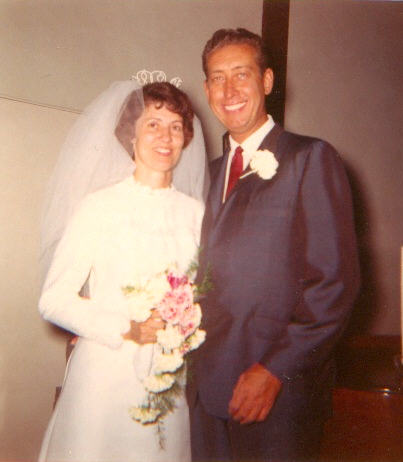
Maybell Marie, was born in El Dorado, Kansas
Aunt Marie received a master's degree from the University of Oregon
Maybell Marie, was born in El Dorado, Kansas, on December 7, 1928
The only daughter of Harry and Daisy Smith, Maybell Marie, was born in the Hull "House on the hill" two blocks west of El Dorado, Kansas, on December 7, 1928. She attended elementary school and is a graduate of Wichita East. She graduated from Bethany Peniel College (now Southern Nazarene University) at Bethany, Oklahoma, and the Samaritan Hospital School of Nursing at Nampa, Idaho, and received a master's degree from the University of Oregon, School of Nursing at Portland, Oregon.
She taught nursing for four years at the Good Samaritan School of Nursing in Portland, Oregon, a year at the Goshen School of Nursing, Goshen, Indiana, a year at Olivet Nazarene University, Kankakee, Illinois and two years at Point Loma Nazarene College in San Diego, California.
Her nephew, Harry recalls having Aunt Marie and Evangelist Norvie Clift in the back seat of his Ford Mustang; Harry and his wife Cecile were accompanying Marie and Norvie on the first date of their courtship.
She married the Rev. Norvie Clift on June 28, 1969, in Richmond, California, where he had been Youth Minister in his earlier days. Norvie was an evangelist for the Church of the Nazarene. After their marriage, Marie assisted him in pastorates at First Church of the Nazarene in Cheyenne, Wyoming; Tacoma, Washington; and Montrose, California. Her nephew, Herbert, was their associate and Youth Director while they were in Montrose. Between their pastorates in Cheyenne and Tacoma, Norvie was back in full time evangelism. They lived in Salem, Oregon and San Diego, California, during this time.
Norvie was born in Wellington, Kansas, June 11, 1923 to Elmer and Vivian Leaf Clift and served in the U.S. Navy during World War II. Following his discharge April 1943, he attended Pasadena College (now Point Loma Nazarene College) earning both an A. B. in religion and a Th. B. degree the next year. Rev. Clift was youth director at Los Angeles First Church of the Nazarene while Marie's Brother (Mendell) and his family attended there, so her two nephews (Harry and Herbert) were already well acquainted with him. He later served as pastor for several Nazarene churches. He had three children from his previous marriage: Candice "Candi" (Clift) Pallotta, Tom Clift and Jeanette (Clift) Santoro. Prior to the death of Norvie's first wife, June, he pastored in Watsonville, California. Between pastorates, Norvie was a successful evangelist and minister for a total of 38 years and continued in that work since his retirement in June, 1988, to Hemet, California, where Norvie and Marie lived for 6 years. They then moved to Warrenton, Oregon, April 1993. Norvie and his wife Marie became members of the Warrenton Church of the Nazarene. Norvie continued to preach occasionally until his death on June 21, 1994, while on a cruise celebrating their 25th wedding anniversary. Marie lived in Warrenton until 2010 when she was moved to a special care facility in Montrose California. Norvie's son Tom also lived in Warrenton.
Aunt Marie, Herby, Harry, Harriet and Mabelle.
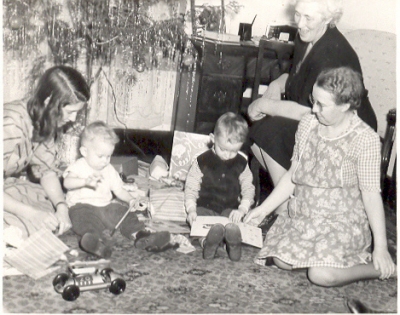
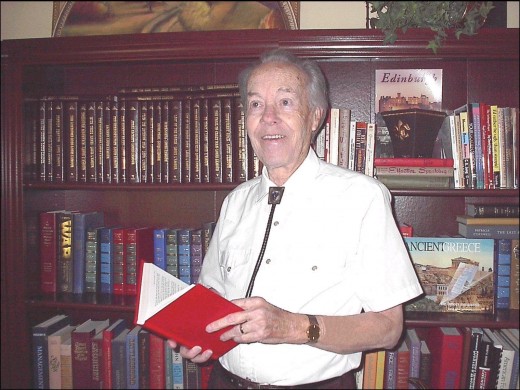
LIFE IN THE CITY by H Mendell Smith
(My childhood and growing up in various cities where we have lived)
We will learn much about Aunt Marie and what it must have been like to grow up during the 1930s and the 1940s.
Although Marie didn't write much about her formative years, her big brother (Mendell) who was about ten years older than her, did write about those years:
Life in the city in Kansas was not much different from life on the farm
during the 1920s and the 1930s. We still didn’t have radio, television, CD
players or computers. Our cars didn’t have self starters--they had to be
cranked to get them started. Some homes still did not have electricity and
we had to depend upon natural gas or kerosene lamps for light. No one had
electric refrigerators. We put a card in the window to tell the iceman, in his
horse drawn wagon, how much ice we needed for the ice box.
Many homes were not “MODERN” meaning that they did not have a
bathroom. It was cold going to the “out house” in the winter. However, for
us, those things began to improve in the mid 1930s.
My earliest recollection goes back to Neodesha, Kansas when I was
about four years old. Dad was pastor of the Church of the Nazarene. As
with most small churches at that time, much of the maintenance and repair
work on the church building had to be done by the pastor. I remember that
Dad was painting the church and I heard him tell Mom that he thought he
needed to put another coat on the church. Thinking of another kind of
coat, I said, “How can he put another coat on the church when it isn’t even
wearing one coat?”
I remember another time when Dad was digging a well in the back yard
at the parsonage. I was always a curious child and interested in anything
mechanical. Dad was using a rotary post hole digger which had to be
turned by hand into the earth (no power tools in those days). As he dug
deeper and deeper, he had to add sections of pipe to the handle from time
to time. Finally he brought up a scoop of water and said the hole was deep
enough. He lined the hole with galvanized steel pipe. To get water we
lowered a long round metal bucket into the well. I remember a valve on the
bottom which automatically opened when it was set down onto a wooden
trough beside the well. From the trough the water flowed into a bucket for
use in the house.
When Dad accepted a pastorate at Lyman, Oklahoma, he packed all our
furniture for shipment by rail. I especially remember that he individually
wrapped each leg and rung of the dining room chairs to keep them from
getting scratched. When we were ready to leave, I was packed into the
back seat of our Model T Ford touring car and Mom held my little brother
Merle in the front seat as Dad raised the isinglass curtain and stepped over
the side to get in -- there was no door on the driver’s side. Then we were
off to Oklahoma -- to a little oil town that had only one church, the Church
of the Nazarene.
After we got to Lyman, we took that same touring car to a nearby
siding where our furniture was waiting for us in a railroad box car. We
took off the isinglass curtains and folded the top down to make room for
our carefully wrapped furniture. We moved into a little three room
parsonage. This parsonage was built in typical oil field style -- 1 x 12 pine
boards nailed inside 2 x 4 framing, with the 2 x 4s exposed on the outside
-- no insulation, but heavy paper was tacked to the inside of the wall to
help keep out the wind. The house had a curved roof similar to wooden
railroad box cars of that era. The third room was a “shed” kitchen built
onto the side of the house. It had a paper ceiling that was so low that once
when Mom raised her hand, it went right through the ceiling. Dad later
built a bedroom onto the side of the house so that we didn’t all have to
sleep in the same room.
There was no plumbing or electricity. At this parsonage we had to go
about a quarter mile to get water from a spring on the other side of the
railroad siding. This often was my task. Mom insisted that I should not dip
the bucket into the pool because of bugs, but that I should get fresh water
directly from the spring. This took a long time because there was only a
small trickle, but then, I had lots of time and patience. Since water was a
precious commodity, we had to use it sparingly -- that was until a fire from
the wood cook stove caught the paper kitchen ceiling on fire. Fortunately
we had enough water to put out the fire, but then I had to go to the spring
and get a fresh supply.
The local refinery later ran a natural gas line to the church and
parsonage and provided free gas so that we could have gas lights and heat.
They still had plenty of excess gas to burn at night at the top of their
standpipe. The flame lighted the neighborhood for miles around.
Our home was surrounded by sandy soil which made it a natural place
for making roads, tunnels and bridges for toy cars and trucks. There was an
oil field “sucker rod” nearby coming from the power house. Its forward
and back motion, which furnished pumping action to an oil well, also
provided motion for any mechanical invention that I could connect to it.
This kept me occupied as a five or six year old boy who liked to be
inventive.
One of the downtown stores provided the church with space for a
sidewalk blackboard that was used for church announcements. I enjoyed
going with Dad every week to “help” him write the announcement of the
next Sunday’s services.
My youngest brother, William Ray “Bill”, was born in Lyman and I
attended my first grade of school there. They didn’t have a kindergarten.
My grandfather Hull wrote letters to me before I was able to read. He
always drew me pictures of cows, horses, etc.
Grandmother Hull came by train to visit us in Lyman just before the
family moved to El Dorado, Kansas. I went back with her so that I could
start school in El Dorado while Mom and Dad were finishing their
pastorate in Lyman. This was my first train ride and it was thrilling to me. I
remember being fascinated with the “walk-over” seats that allowed the
conductor to move the backrest forward or backward so that two seats
could face each other. This made a private space for those that desired it.
Grandma brought a basket of food and had a collapsing metal drinking
cup that I found to be fascinating. I was always getting thirsty so that I
could go to the water spigot and use that special cup.
Uncle Ray once took us back from Grandmother’s to Lyman in his
Dodge for a visit. When we got close to Lyman, I kept telling him to “turn
here” to go to Bohnham’s or “turn here” to go some where else. He finally
told me to stop telling him to “turn here” until we got to the road to our
house. I stayed with my grandparents in El Dorado until Mom and Dad
completed their move to El Dorado.
As mentioned in an earlier chapter, we lived just across the alley from
our grandparents so they had a great influence on our lives. Grandpa would
get down on the floor with me and help me play with Tinkertoys. We built
windmills, merry-go-rounds and, without plans, he could build operating
gears that fascinated me.
Sometimes I would sleep with Grandpa on the “Murphy bed” which he
would swing out of the living room closet and pull down to make a bed.
On Saturday night Grandpa would wind their clock on the fireplace mantle.
This was an old clock that chimed the hours and half hours. It was one of
the first things he purchased for the family as soon as they could afford it.
This is an heirloom that is still in the family. Before he went to bed at night
Grandpa would take out his false teeth. Once when I was looking at his
teeth lying there, he asked me why I looked so puzzled. I asked him,
“Grandpa, where is your tongue?”
Sometimes Grandpa would put me into that closet when I was naughty.
He would call to me, saying, “You can come out when you say you are
sorry. Are you sorry?” I am told that once my response was “I’m not sorry
yet, but I’m getting sorry.”
They had a console Victrola that was about the first thing I wanted to
see whenever we went to Grandpa’s house. That was before we could get
much music on the radio and of course there was no TV. I loved to listen
to its music. I think my favorite recording was “I Love to Tell the Story.” I
either wore it out or broke it because it is no longer in the collection of
their old records. I was so curious that when the speaker doors were
opened, I would peek inside to look for the man who was singing. My aunt
Olive (Olive Rebecca McDaniel), who was visiting, sewed me a rag doll
just the size needed to stand up inside the speaker so I could see who was
singing.
Thanksgiving was a great time at their house. While the men and
children went to church for the Thanksgiving morning service,
Grandmother was busy with Mother and aunt Mabelle preparing the dinner.
Uncle Frank Ullum (Grandmother’s brother) was always there and
sometimes Uncle Oscar and his family also were there from Detroit,
Michigan. Grandmother always made her famous apple pie and we always
had turkey.
Once Grandma asked me to help kill the turkey She held it with its neck
across an old tree stump as I tried to cut off it’s head with an ax. I didn’t
have the strength (or maybe the ax was too dull). Needless to say, some
one else had to finish the job. Sometimes we went to the Four Mile School
for their Thanksgiving dinner and program. Aunt Mabelle tells about this
annual event in chapter 9, “Life on the Farm.”
Once when trying to pick out a chicken for dinner, Mother and
Grandmother were discussing which one to kill. They spied an old rooster
and one of them said, “I think we should kill him, he isn’t much good. He is
always a lot of trouble, and just eats a lot of food.” Merle, who was
listening nearby and thought they were talking about him. He was getting
quite frightened. He couldn’t take any more of that
How to train to be a Nurse - A carrer as a nurse
Nursing is the protection, promotion, and optimization of health and abilities, prevention of illness and injury, alleviation of suffering through the diagnosis and treatment of human response, and advocacy in the care of individuals, families, communities, and populations.
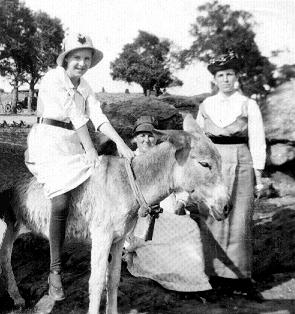
LIFE ON THE FARM
By Mabelle Edna Hull
In case you wondered where Aunt Marie got the "first name" of Maybell, it came from her Aunt Mabelle Hull.
Aunt Mabelle and Aunt Harriet (Harriet Hull Fisher) lived in a big farm house in El Dorado Kansas; where all the Smith family gathered for Christmas each year. Mabelle, who was editor of the “Butler County News” in El Dorado, always had a story to tell about life on the Farm.
LIFE ON THE FARM
By Mabelle Edna Hull
In spite of hard work for older members of the family, life on the farm
was enjoyable and there was plenty of time for recreation. We were poor
and finances were a matter for discussion among all the family. Mother
raised vegetables and canned fruit which, with chickens, eggs, milk and
meat from the annual butchering of hogs and calves, provided most of the
food. She also sold eggs, butter and chickens to pay for purchases of
groceries. Money from sales of grain, hogs and cattle went to pay for the
land, taxes and machinery.
The four older children assisted with work as soon as they were old
enough to be of help. Daisy was Mother’s main stay in the house while
Harriet preferred outdoor work such as helping herd cattle on unfenced
grassland, raking hay, driving the “go-devil” team or doing other seasonal
tasks.
In addition to caring for a large family, Mother always had time and
strength to help neighbors who were ill. She was an excellent nurse and,
even as a young girl, cared for many newborn babies. She nursed us
through childhood diseases and a doctor was seldom called. Her remedies
for colds were so numerous that she never was quite sure which was most
effective. As a result, each time any one suffered with a cold, the complete
treatment of mustard plaster, goose grease or lard, and camphor applied to
the chest and a flannel cloth around the throat, were always used. We
might complain and rebel but the treatment went on relentlessly.
Our father also found time to help neighbors in spite of the endless work
of farming, breaking prairie, building fences and caring for stock. He never
failed to take us on several fishing trips each summer to the Buckeye
pastures or along Four Mile Creek. Mother didn’t like to fish and spent her
time picking gooseberries.
In their early married life our parents seldom had any money. In some
way they managed to save one dollar and kept it while deciding how it
could be spent to best advantage. A man came along one day, saying he
was on his way to see his dying father and needed help. Dad, always most
sympathetic, went to the house, returning with the dollar.
In later years small amounts in coins were kept in an old teapot. When
any of the children were going some place where they might need money,
they were free to help themselves. If any was left when they returned home
it was replaced in the teapot.
There never was a key to any of the six outside doors in our house
which was evidence of the fact that strangers and neighbors alike were
trusted.
We seldom missed attending church, going in the morning for Sunday
School and church and returning for evening services. We also attended
revival meetings held each winter. No matter how cold the weather, we
went. When there was snow the wagon bed was put on runners and we
were glad when this was necessary. Occasionally revival meetings were
held in the Four Mile schoolhouse.
There was not much money to pay the minister in cash but our parents
contributed as generously as possible. They also gave farm produce,
chickens, eggs, butter, fresh vegetables and meat. The pastor and his family
always were welcome guests. Many times one minister in particular, Rev.
A. M. Wilkerson, drove to our farm and then borrowed a fresh horse to
continue his visits throughout the country side.
Sometimes groups of Indians, traveling between their Nebraska and
Oklahoma reservations, came our way. On one occasion when Mother was
alone in the house a band stopped and demanded food. Not knowing that
Dad was nearby at the barn, she gave them everything they asked for which
included most of her sugar, flour and other supplies.
She had cooked sweet potatoes, fresh from the garden, for the noon
meal and had placed them on the table. One squaw spied the succulent
vegetable and, using her fingers, helped herself generously, eating greedily
until the dish was emptied.
Gypsy caravans also traveled through the country and often camped at
the school yard while telling fortunes. While they were in the
neighborhood, movable possessions were guarded.
Our home was the gathering place for many relatives on Christmas day
and on Sundays. After church service Dad would say, “Come home with us
for dinner,” and usually some visitor would accept. During the week he
never failed to invite any casual visitor to stay for dinner. When Mother
saw a neighbor drive into the yard she sent Daisy to the cellar to slice some
ham or asked Harriet to "run down" a chicken and, in the summer, sent her
for fresh roasting ears.
One time when it was too late to prepare more food, a neighbor,
Lafayette Poe came. Mother just held up dinner saying, “We can’t eat until
he leaves.” Finally Harriet went out doors and said, “Mr. Poe, Mother says
she wishes you would go home so we can have dinner.” He went.
We not only had guests for meals but also for overnight and sometimes a
stay of several days. Relatives came from West Virginia, Iowa and Indiana.
We were fortunate in having four bedrooms and, in emergency, a bed was
made up in the parlor. It never occurred to us that our furniture might be
shabby or that persons from town might notice the lack of modern
conveniences. Oscar did not hesitate to bring his favorite instructor at
Emporia home for Christmas holidays. The son of the college president
spent part of a summer vacation with us also.
When Mother, Dad, Oscar, Daisy and Harriet were living in a two-room
log cabin, Aunt Olive, Uncle Matt, Alva, Sylvia and Stella, and uncle
Matt’s sister Harriet and her husband, Israel Corbin, came to spend a few
days visiting and fishing. Mother was concerned but Aunt Olive suggested
filling empty “ticks” with straw and making beds in the loft room for the
men and boys and having the women and girls sleep downstairs. This
solved the problem. However the weather was bad and Israel didn’t want
to fish in the rain. So he sat by the cook stove with his feet in the oven
while Mother walked around him trying to prepare meals.
Literary society meetings, box suppers and neighborhood parties were
diversions for the older children. At home we always found entertainment
without end. During winter months we spent evenings playing flinch or
dominoes, had family spelling contests, recited poetry and readings and
listened to Dad’s numerous “stories.” Popcorn and apples added to the joy
of the evening. After finishing the chores and before coming in for supper,
Dad brought in some apples from winter storage. They were buried in a
deep hole and covered with straw.
Among the poems was one which Dad taught Oscar to say at the age of
three years and which he first spoke at a Fourth of July celebration. It
began, “You’d scarce expect one of my age to speak in public on the
stage.” In later years Oscar said he was ten years old before he realized that
“You'd-scarce-expect” was three words and not one as he recited it.
Other recitations were “Curfew Shall Not Ring Tonight,” which was
Daisy’s favorite; “Three Foxes”; “Poor Deacon Brown”; "St. Peter Stood
Guard” and “Christmas in Bilville Town.”
Oscar, especially, enjoyed debating and insisted that Harriet participate.
After arguing some subject at length and with real logic, he would say,
“Now, let’s change and you take my side while I take yours.” This annoyed
her no end. Popular topics at literary society were “Resolved that the
broom is more important than the dishcloth” or “There is more pleasure in
pursuit than in possession.”
One great event was the purchase of an organ. This was placed in the
parlor, which, incidentally, was used only when we had company. Daisy
and Harriet started taking music lessons. Daisy practiced diligently but as
soon as Mother was out of hearing Harriet was down on the floor with a
book and resumed practice only when she heard Mother returning to the
house.
None of us had an ear for music except our father. He loved to sing
hymns, patriotic songs or southern ballads. Among his favorites were
“Amazing Grace,” “O For a Thousand Tongues,” “There’s a Land That is
Fairer Than Day” and “Come Thou Fount of Every Blessing.” Although
Mother couldn’t carry a tune, she also sang hymns, among which was “O
Come Angel Band.”
All of us enjoyed reading or listening to someone else read. We read
anything and everything that was available -- “Capper’s Weekly”, “Youth’s
Companion,” books from the school library, and a few books that we were
able to purchase. One luxury was “Hill’s Manual,” a large volume which
covered almost every subject imaginable -- etiquette, flowery letters
proposing marriage or telling of the death of a loved one, business letters,
sample wills and other useful information. We read this over and over and
had we taken it seriously, our deportment would have been greatly
improved.
Of course the Bible was part of our small library and we enjoyed many
of the Bible stories. When Oscar and Daisy were small, the minister
preached on Lazarus and told how he was raised from the dead. After
returning from church Oscar felt it should be emphasized. Digging a
shallow hole, he told Daisy to lie in it, as if she were dead. Then he said,
“Lazarus, came forth.” No response. Again he gave the command and
again no movement, becoming impatient, he hit her with a sharp-edged
rock and said, “I told you to come forth.” She didn’t wait for another
command.
All holidays provided breaks in the routin
The Clift Family Plot
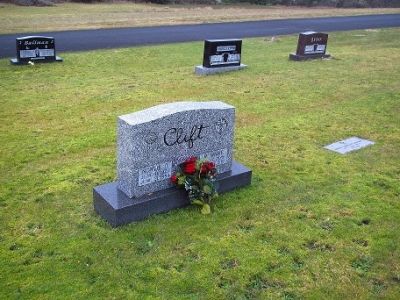
Grandad's barn near Potwin taken 2002
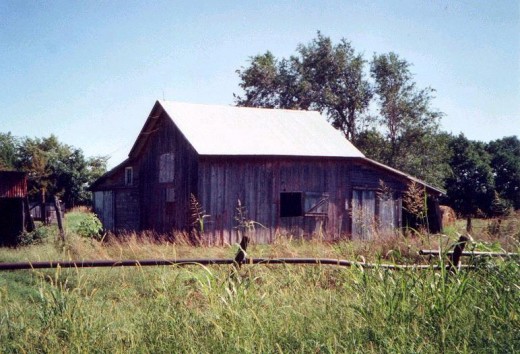
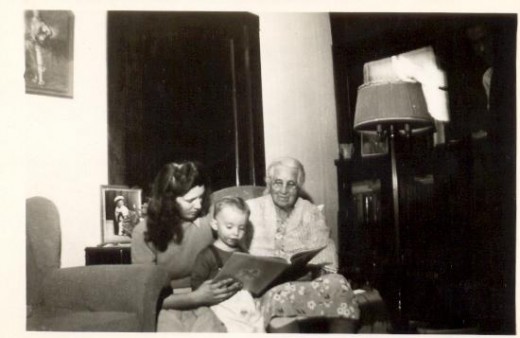
SCHOOLHOUSE IN THE DELL
by Wait W McDaniel
When in thoughtful meditation,
On the scenes of long ago,
We oft think of our old schoolhouse,
And the friends we used to know.
Kind thoughts within us linger,
And fond memories still dwell
Around the old "Hull Schoolhouse,"
Old log schoolhouse in the dell.
Friendship ties are yet unbroken,
That were made within those walls,
Kindly friends have long been parted,
They have gone where duty calls.
As we pass along the highway,
Our own tears we scarce can quell,
When we view this hallowed school house,
Old log schoolhouse in the dell.
Its walls they are unshaken,
They are standing yet today
As a monument to builders
Who have long since passed away.
It is not a house of beauty
But there's none we love so well,
As the weather-beaten schoolhouse,
Old log schoolhouse in the dell.
The playground near the schoolhouse
Is very much the same,
As when with youthful vigor,
We played our favorite game.
The brooklet still is flowing,
Where often times we fell,
When at noon time we went skating,
From the schoolhouse in the dell.
The fixtures of the schoolhouse
Have all vanished now and gone.
Not one is left to testify,
Of them all, not even one.
E'en the well remembered birch rod
Is not there to speak and tell
Of our vigorous youthful training
In the schoolhouse in the dell.
Maybell Marie (Smith) Clift - December 7, 1928 – January 27, 2011
Click thumbnail to view full-size

















Read great books about life on the Farm
SCHOOLHOUSE IN THE DELL
by Wait W McDaniel
When in thoughtful meditation,
On the scenes of long ago,
We oft think of our old schoolhouse,
And the friends we used to know.
Kind thoughts within us linger,
And fond memories still dwell
Around the old "Hull Schoolhouse,"
Old log schoolhouse in the dell.
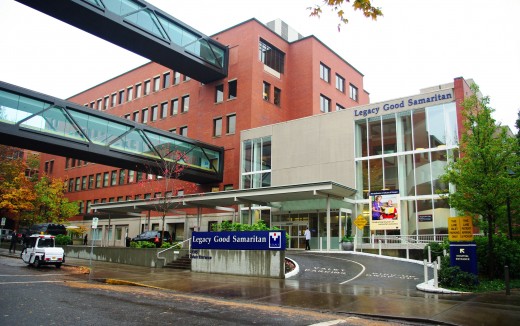
Printed in the Butler County Times Gazette, in 1964 - El Dorado, Kansas
This artical was writen by Habelle Hull of El Dorado
Pasadena, California, have returned to their homes after visiting in Wichita with Marie's parents and Harry's grandparents, the Rev. and Mrs. Harry W. Smith, and with other relatives and in El Dorado with Mrs. Russell H. Fisher and Mabelle Hull.
Marie is assistant instructor of obstetrical nursing in Samaritan Hospital in Portland, Oregon. Harry Mendell Smith Jr., a son of Mr. and Mrs. H. Mendell Smith of Los Alamitos, California, attends Pasadena City College and is employed in the payroll division of the personnel department of the Broadway Department Store in Los Angeles. Heading the personnel department of the Broadway, which has 2,100 employees, is Virgil McCaig, a former El Doradoan who now lives in Altadena, California.
M Marie Smith was assistant instructor of obstetrical nursing in 1964 - Marie worked at the Samaritan Hospital in Portland, Oregon.
Click thumbnail to view full-size



Harry M Smith Jr. was employed in the payroll division of the personnel department of the Broadway Department Store in Los Angel - Following are some pictures d
Click thumbnail to view full-size






Mabelle Hull was editor of the Butler County News Paper, in 1964 - Here are glimpses of the Butler County Times Gazette in El Dorado, Kansas
Click thumbnail to view full-size





An OB-GYN Nurse
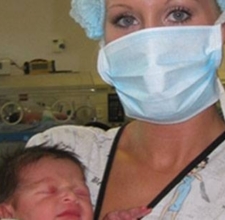
How to Become an OB-GYN Nurse
Marie Smith Clift was an OB-GYN Nurse
Sharon L. Cohen has 30-years' experience as a writer and editor. Her Atlantic Publishing book about starting a Yahoo! business is being followed by one on Amazon.com and another about starting 199 online businesses ( See http://online-business-guide.com). Clients love her excellent high-quality work. She has a B.A. from University of Wisconsin, Madison and an M.A. from Fairfield University Graduate School of Corporate and Political Communiation.
By Sharon L. Cohen, eHow Contributor
Become an OB-GYN Nurse
The United States 2000 Census reports that more than half of everyone in the country is female. Plus, the American population is expected to grow by more than 100 million in the coming four decades. It appears that the need for nurses in obstetrics and gynecology (OB-GYN) is a given. These registered nurses perform a wide variety of duties, from doing stress tests on babies about to be delivered to preparing women for the possible side effects of chemotherapy for breast cancer. However, requirements for OBG-YN nurses vary by state and employer.
Read more: How to Become an OB-GYN Nurse | eHow.com
LIFE ON THE FARM
By Mabelle Edna Hull
In spite of hard work for older members of the family, life on the farm
was enjoyable and there was plenty of time for recreation. We were poor
and finances were a matter for discussion among all the family. Mother
raised vegetables and canned fruit which, with chickens, eggs, milk and
meat from the annual butchering of hogs and calves, provided most of the
food. She also sold eggs, butter and chickens to pay for purchases of
groceries. Money from sales of grain, hogs and cattle went to pay for the
land, taxes and machinery.
